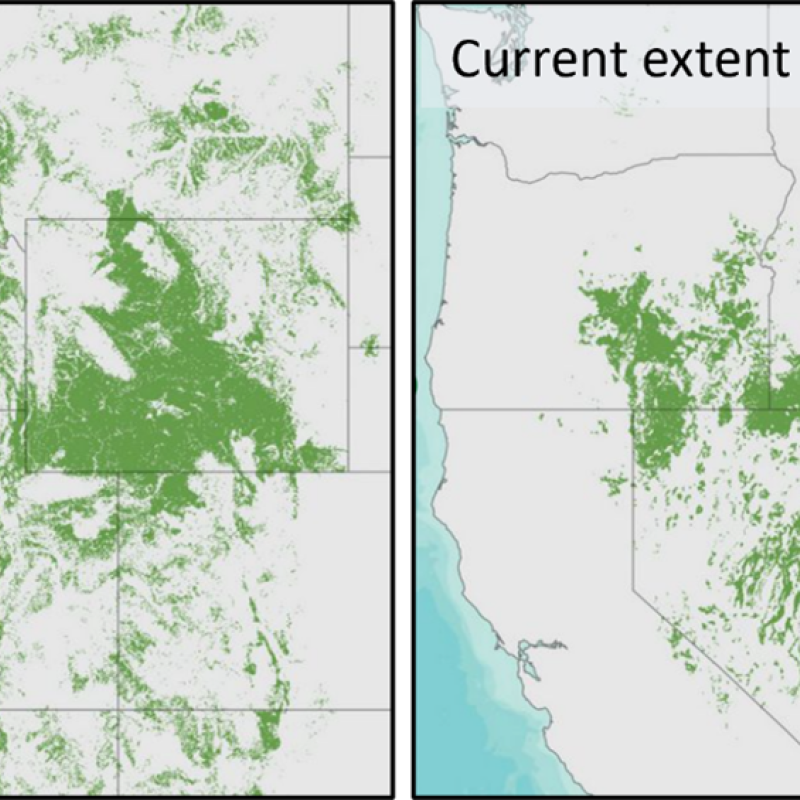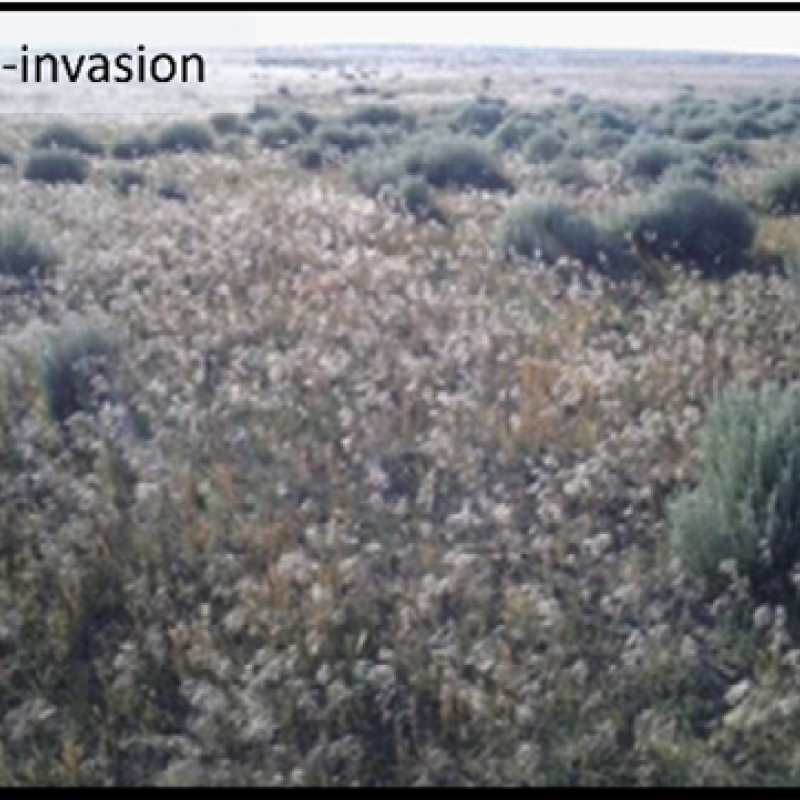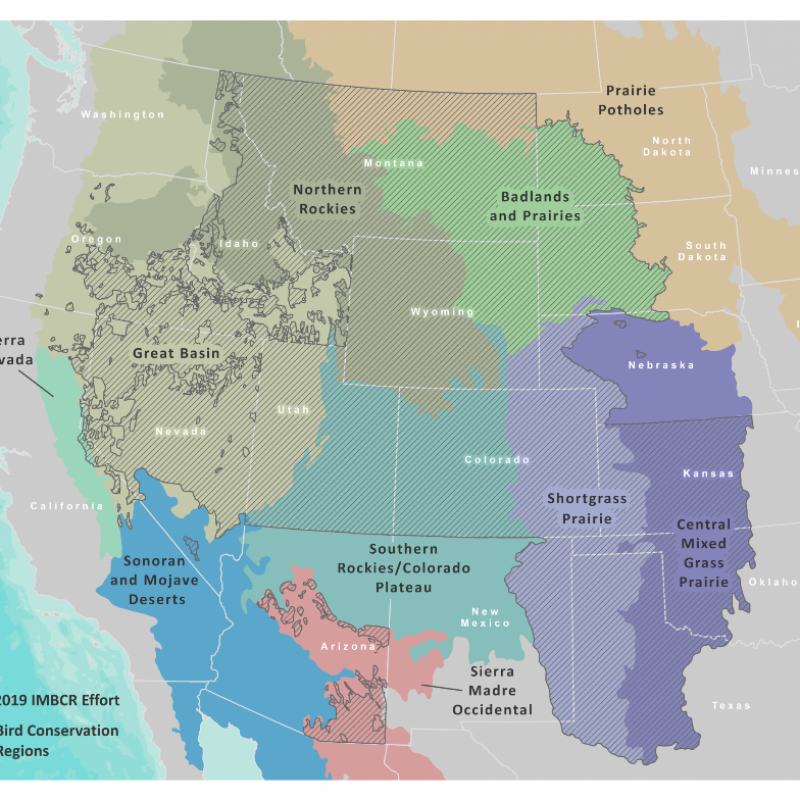How grass invasion and fire affect songbirds of the sage
Summer Graduate Research Assistant, Brendan Hobart, discusses how grass invasion and fire affect songbirds of the sage
How grass invasion and fire affect songbirds of the sage
Authors: Brendan Hobart, Chelsea Nagy, Max Cook, Chris Latimer, Val McKenzie
Sagebrush: big trouble in a vast ecosystem
The sagebrush ecosystem of the American West is vast—it stretches from North Dakota to Washington to New Mexico and covers >100 million acres of land. Dominated by pale-green sagebrush (Artemisia) shrubs and long-lived, deep-rooted native grasses, this ecosystem provides essential habitat for iconic wildlife species, including pronghorn and sage-grouse. Yet, we’re losing sagebrush ecosystems faster than we can protect or restore them, putting wildlife at risk. And it’s not just the well-known species that are faced with declining habitat—hundreds of wildlife species rely upon the shrubs and grasses of sagebrush ecosystems to provide habitat within which they can eat, sleep, migrate, and rear their young. One group of wildlife that we suspect is at risk is songbirds, but for many species we can’t be sure because not enough research has been done. Thus, we’ve compiled a multidisciplinary team to undertake research aimed at understanding and predicting threats faced by songbirds of the sage.

Intact sagebrush ecosystems have undergone a dramatic decline and continue to be lost at a rate of around one million acres per year. Credit: The Nature Conservancy.
Cheatgrass: a nasty invader
One of the greatest threats to sagebrush ecosystems is the invasion of non-native grasses, especially “cheatgrass” (Bromus tectorum), a species native to Eurasia. Cheatgrass can directly outcompete native flora: once introduced to an area, it grows quickly and aggressively, using up water and nutrients that sagebrush and native grasses need. Further, because cheatgrass is very flammable and grows more densely than native grasses, invaded areas burn more frequently and severely than uninvaded areas. For example, a recent study found that areas invaded by cheatgrass were twice as likely to burn. Although some fires occurred historically in sagebrush ecosystems, native plants can’t keep up with these frequent and severe fires, so burns tend to result in monocultures of cheatgrass. This cycle—in which cheatgrass increases fire, and fire increases cheatgrass—has been dubbed the “grass–fire cycle”, and it spells trouble for wildlife.

Left: Healthy, intact sagebrush habitat. Center: Sagebrush habitat that has been invaded by cheatgrass. Right: Cheatgrass monoculture. Credit: Rottler et al. 2015, Rangelands.
Songbirds: understudied and in decline
Throughout North America, many bird populations are in decline: it was recently estimated that we have lost nearly 3 billion individual birds across the continent in the last 50 years. Unsurprisingly, birds that rely on shrublands and grasslands within sagebrush ecosystems are no exception. For example, we know that populations of the iconic and well-studied greater sage-grouse have declined by 80% since 1965, which can be partially attributed to the grass–fire cycle. Yet, we know far less about how this cycle has affected songbirds that rely on sagebrush ecosystems, because this group of species has received less research attention. This lack of research creates a knowledge gap: if we don’t know how the grass–fire cycle affects songbirds, then we can’t effectively predict or mitigate the consequences of impending grass invasion for this important wildlife group. Indeed, when we lose songbirds, we also lose the ecosystem services and economic stimulus they provide (for example, songbirds consume pest insects and enable birdwatching ecotourism). Given the ecological and economic costs of losing songbirds, there are government agencies and nongovernment conservation organizations committed to the protection of songbirds and their habitats. Such groups would benefit from an up-to-date understanding of how the grass–fire cycle alters songbird communities.

Representative and diverse songbirds of sagebrush habitats and adjacent ecosystems. Credit: The Cornell Lab, All About Birds.
Gaining a comprehensive view of consequences for songbirds
We—a group of scientists from the University of Colorado and Bird Conservancy of the Rockies—have designed a research project that (when complete) will clarify how grass invasion and wildfire affect songbirds that reside in sagebrush ecosystems. Our research makes use of data from an extensive monitoring project that has been sending trained biologists into the field to observe and identify songbirds for more than a decade and across 14 states in the Western U.S. We can pair this bird monitoring dataset with remote-sensed environmental information (that comes from satellites in orbit!) about weather, vegetation, topography, and human impacts, which allows us to assess how these factors are related to songbird “species richness” (the number of different songbird species that reside in a given area).
On average, we expect more ecologically intact and pristine places to have higher species richness; thus, we anticipate that the grass–fire cycle probably reduces songbird species richness. In addition to understanding how cheatgrass invasion affects the number of species in an area, we also want to understand how it affects the type of species. For example, it would be concerning (but not unexpected) to see that areas with abundant cheatgrass are lacking rare and specialized songbirds. Our research to quantify these impacts is still ongoing, but upon completion will provide the most comprehensive look into how songbirds are affected by cheatgrass and fire.

A map of the area (hatched) surveyed by trained biologists to varying degrees since 2008. Credit: Bird Conservancy of the Rockies.
Looking forward to inform conservation
Not all sagebrush ecosystems have been invaded, but cheatgrass is still spreading. An important dimension of our research is that it will provide predictions of where songbirds will likely be threatened by future cheatgrass invasion. These “threat maps” will allow land management and conservation organizations to focus their attention and resources on high-value areas that are also at risk.
For instance, consider a land manager who works in a region where cheatgrass has not invaded and who has been tasked with preserving habitat for as many bird species as possible while using as little money as possible. Such a manager may wish to prioritize areas with (1) currently high songbird richness and (2) high predicted cheatgrass impacts in the next 50 years. In the context of planning for cheatgrass invasion, an area meeting these criteria is of greater songbird conservation priority than, for example, an area without many songbird species or where cheatgrass invasion is unlikely. The land manager could thus focus on preventing or mitigating cheatgrass invasion in areas meeting these criteria.
Of course, the goals, resources, and scenarios faced by land managers vary among organizations and regions, especially since some areas are already heavily invaded by cheatgrass (e.g., parts of Nevada) whereas others remain lowly-invaded or uninvaded (e.g., parts of Wyoming). Across the range of goals and scenarios, our research into the consequences of the grass–fire cycle for songbirds will contribute to more cost-effective songbird conservation.
If you’re interested in learning more about sagebrush ecosystems and their threats, management, and wildlife, check out the pages and organizations below:

